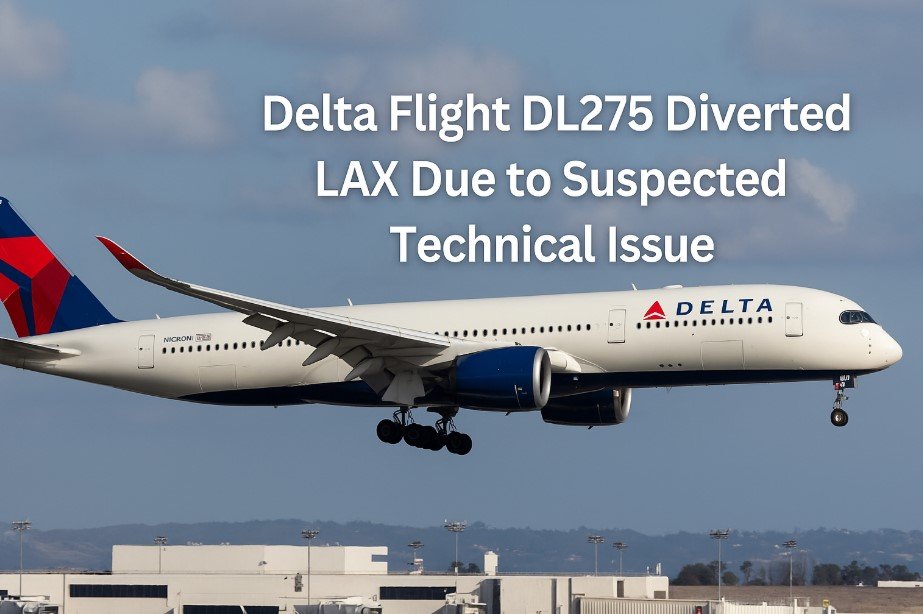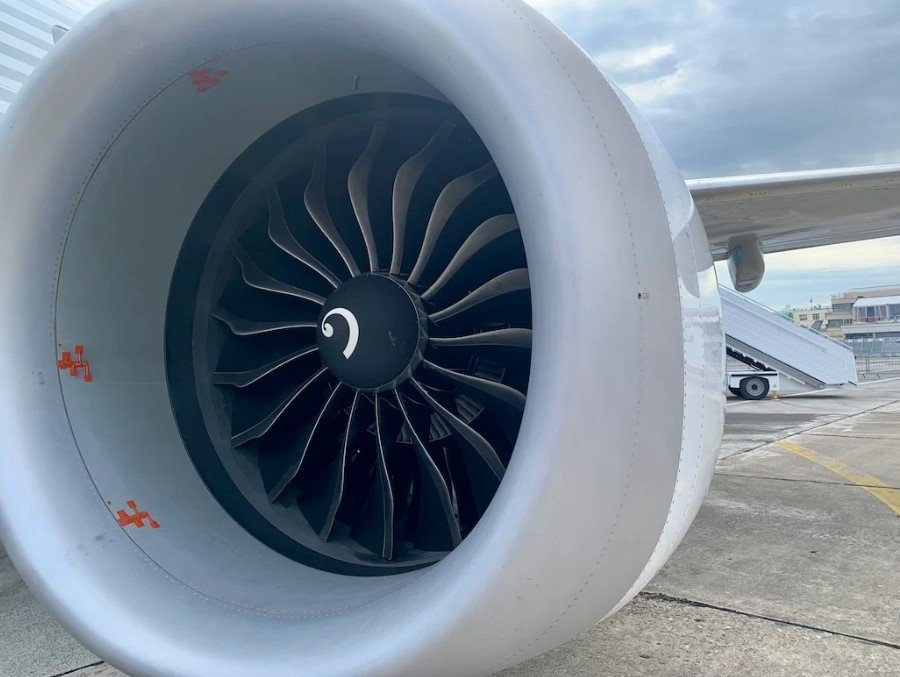News
Delta Flight DL275 Diverted LAX Due to Suspected Technical Issue

Delta Air Lines Flight DL275, which was scheduled to travel from Detroit to Tokyo Haneda, was forced to make an unexpected diversion to Los Angeles International Airport (LAX) after a suspected technical issue occurred mid-flight. The flight, operated by an Airbus A350-900 with the registration N508DN, departed Detroit Metropolitan Wayne County Airport from gate A46 and was scheduled for a 13-hour journey across the Pacific.
Departure and Planned Route
Flight DL275 departed Detroit on time, with Tokyo Haneda as its destination. The planned route included crossing the continental United States, flying over Alaska, and then over the Bering Sea before continuing across the Pacific to Japan. This route is typical for transpacific flights from the Midwest, offering the most efficient flight path to Tokyo.
Mid-Flight Incident Over the Bering Sea
While cruising over the Bering Sea, the flight crew decided to turn the aircraft around. According to early reports, the suspected cause was a malfunction in the aircraft’s engine anti-ice system. This system is important for maintaining engine performance in cold and icy conditions. If the system experiences problems, the aircraft may not be able to safely continue through certain weather conditions common on northern Pacific routes.
Although the exact details have not been confirmed by Delta, technical issues of this kind are taken seriously, especially on long-haul flights over remote areas. The crew followed safety protocols by opting to divert the flight to a location where any necessary maintenance could be carried out and where passengers could be accommodated.

Decision to Divert to LAX
Rather than returning to Detroit, the crew and operations team decided on Los Angeles as the diversion point. LAX is a major Delta hub for international flights and is well-equipped with the necessary facilities and maintenance teams for the Airbus A350. It also offers easier logistics for rebooking passengers onto later flights to Japan.
From the point of turning around over the Bering Sea, the aircraft flew for approximately five hours before arriving in Los Angeles. The diversion meant a significant change for passengers, but safety remained the top priority.
Arrival at LAX
Flight tracking data shows that DL275 landed at Los Angeles International Airport at around 01:38 AM local time. The landing took place on runway 06R, and the aircraft arrived without further incident. Passengers were able to disembark and were expected to be provided with assistance for onward travel arrangements.
Also Read: Why KLM Flight KL635 Declared an Emergency and Landed in Glasgow
Aircraft and Crew Actions
The Airbus A350-900 is one of Delta’s most modern long-haul aircraft, known for its advanced safety systems and fuel efficiency. When an issue is detected, especially with essential systems like engine anti-ice, the crew follows established protocols that prioritise safety over schedule. Turning around mid-flight can be disruptive, but it ensures that the aircraft lands at an airport with the right maintenance capabilities.
In situations like this, the flight crew communicates with both air traffic control and the airline’s operations centre to determine the best diversion airport. The decision takes into account weather conditions, available maintenance facilities, and passenger needs.
Passenger Experience
For passengers on board, diversions can be inconvenient, especially on long international journeys. In this case, passengers expecting a direct flight to Tokyo had their travel plans interrupted. Delta typically assists affected passengers with rebooking onto alternative flights, offering hotel accommodations if necessary, and ensuring they reach their destination as soon as possible.
Given the timing of the arrival in Los Angeles, many passengers were likely rebooked on later flights to Tokyo or other nearby destinations in Japan.
Safety and Industry Standards
Aircraft technical issues can occur despite strict maintenance schedules and regular inspections. Modern aircraft like the Airbus A350 are equipped with systems that alert crews to potential problems before they become critical. Industry regulations and airline policies require immediate action if a system related to flight safety shows signs of malfunction.
In the case of DL275, diverting to LAX was consistent with industry safety practices. Even if the suspected fault did not lead to an immediate danger, it was not worth the risk of continuing for several more hours over the Pacific Ocean without a suitable diversion option nearby.
Technical Issue Reports
While Delta has not provided full technical details, the suspected engine anti-ice system problem would explain the choice to divert. This system prevents ice buildup on engine components during flight, which is particularly important in cold-weather routes such as those over the Bering Sea. A malfunction could limit the aircraft’s ability to fly safely at certain altitudes or through specific weather conditions.
Aircraft are certified to operate with redundancy in many systems, but not all issues can be ignored for long-haul flights. In some cases, it is safer to address the issue before continuing.
Conclusion
The diversion of Delta Flight DL275 from Detroit to Los Angeles instead of Tokyo highlights the importance of safety-first decision-making in aviation. While the suspected technical problem caused inconvenience for passengers, the actions taken by the crew were consistent with standard operating procedures for handling in-flight technical issues.
The aircraft landed safely at LAX, and passengers were expected to continue to their destinations once alternative arrangements were made. The Airbus A350’s advanced monitoring systems and the crew’s quick decision-making helped ensure that the situation was managed without further incident.
Delta continues to monitor and maintain its fleet to the highest safety standards, and while diversions like this are rare, they serve as a reminder of the complexity of long-haul operations and the careful planning required to keep passengers and crew safe.
Read more: Emergency Diversion of United Airlines Flight UA770 – Full Details
-

 Self Improvement2 months ago
Self Improvement2 months agoUsing BCBS Rehab to Access Quality Addiction Care
-

 Games2 months ago
Games2 months agoPusoy Strategies for Play That Also Work in Pusoy Dos in English
-

 News2 months ago
News2 months agoCreating Acoustic Comfort in Restaurants: The Overlooked Ingredient of a Perfect Dining Experience
-

 Beauty2 months ago
Beauty2 months agoNatural Beauty in Glass: The Power of Biophotonic Packaging






